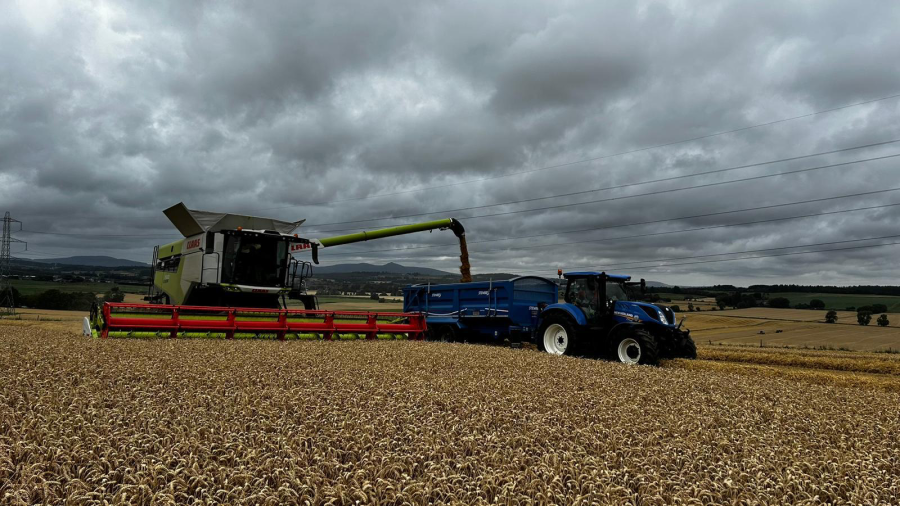A first-time crop of Bamford grown by an Aberdeenshire farmer has won best winter wheat in a cereal growing competition.
Scott Campbell’s Bamford was also judged to be the overall reserve champion during the competition, which is organised by the Royal Northern Agricultural Society and sponsored by McCreath Simpson and Prentice.
As well as being delighted, Scott says having been on the judging panel himself in the past, he can confirm that the agronomic standard of entries is high. However, in terms of his 12ha crop of Bamford, establishment went well until the arrival of persistent rain, he says.
“The crop was drilled as a first wheat on 20 September at a rate of 400 seeds/m2, initially establishing well until we were hit by heavy rain from mid-October. Things then went from bad to worse with further unprecedented wet weather that continued from Christmas right through until early spring, delaying both our first two scheduled splits of nitrogen and our T0 fungicide spray,” explains Scott.
The delayed first application of granular N was eventually applied on 1 March with a further application of potash a month later. A second split, this time liquid N at 300 l/ha, was then delayed until 12 April.
“Through March and April we were understandably concerned about the missed timings and our inability to get the sprayer onto certain sections of the fields with standing water still visible in places. The T0 was finally applied on 20 April with our T1 following on 12 May.
“By the time we’d applied the main flag leaf spray on 1 June, the wet weather had finally abated and we’d just about caught up. Thankfully, Bamford’s robustness was able to offer us some flexibility on the key fungicide sprays in a year where septoria pressure was also extremely high,” says Scott.
Clean leaves
T3 was applied on 24 June with the crop still showing three clean leaves and, during a very challenging season, it lived up to its 6.7 septoria rating, he continues.
“Cutting on 1 September at 19.5% moisture, higher than ideal but compromised by an early dry weather window, Bamford yielded 10t/ha – just below our five-year average of 10.2t/ha with a specific weight of 80.9kg/hl.
“In the context of the unprecedented weather, that was an incredible performance fully justifying my faith in our agronomist Charlie Catto who’d recommended the new Group 3 winter wheat to us,” says Scott.
Increasing hectarage
Furthermore, on the basis of its performance, he adds that he’ll be increasing the area of Bamford to 40ha this coming autumn, with a view to targeting distilling as the end market.
According to Agrii’s Charlie, it couldn’t have been a tougher season for Scott’s first crop of Bamford. “However, it’s certainly proved its resilience and seems well suited to growing conditions in the North. As a soft wheat, with multiple end market options, there’s little doubt in my mind that Scottish growers require a more flexible variety like Bamford,” he suggests.
“Although it’s still early days, I think there’s potential for Bamford to establish itself as a game-changing variety such as Riband in the 1990s or, more recently, Skyscraper,” concludes Charlie.
Click here to learn more about Bamford from Elsoms.




